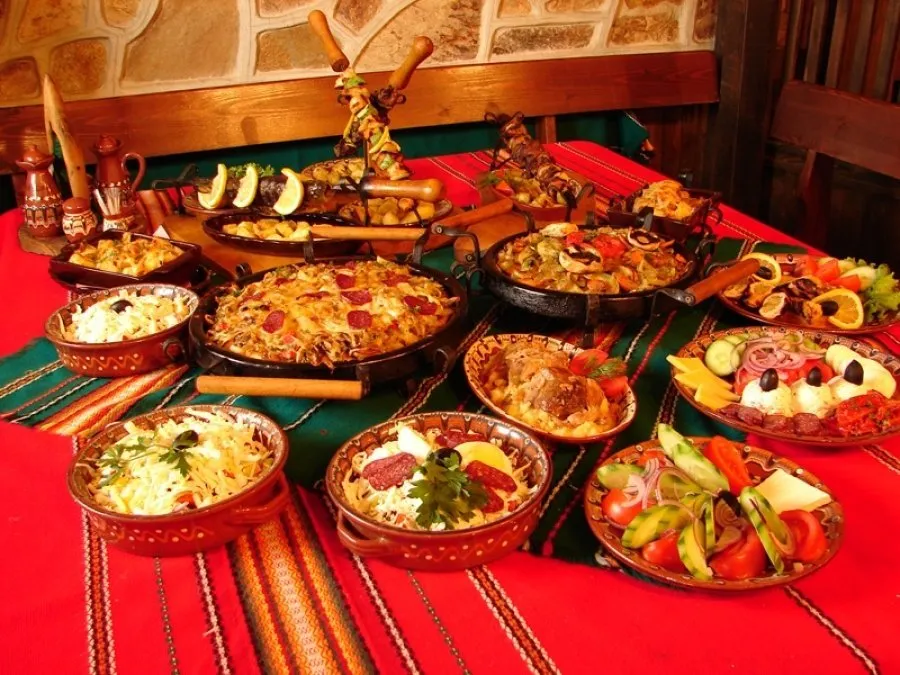
Bulgarian cuisine, part of Southeast European culinary traditions, shares traits with other Balkan cuisines due to geographical factors favoring diverse produce. It mirrors Turkish and Greek cuisine, with influences from Ottoman and Middle Eastern culinary styles, evident in dishes like moussaka, gyuvetch, kyufte, baklava, ayran, and shish kebab. Salads are common appetizers, complementing dairy products, wines, and alcoholic beverages like rakia. Soups like tarator and pastries such as banitsa and pita are also staples.
Main courses often feature water-based stews with lamb, goat, veal, chicken, or pork, with grilling, especially sausages, being prominent. While pork is common, fish and chicken are widely used too. Veal is popular for grilling in appetizers and main courses. Bulgaria is known for lamb exports, with notable domestic consumption, especially in spring.
Yogurt consumption among Bulgarians is traditionally high, attributed to the country’s historical association with Lactobacillus bulgaricus, crucial for local dairy products. Sirene, a white brine cheese akin to feta, is a popular ingredient in salads and pastries.
Holidays often entail specific meals. Christmas Eve calls for vegetarian stuffed peppers and cabbage leaves (sarmi), New Year’s Eve usually involves cabbage dishes, Nikulden (St. Nicholas Day) includes fish (usually carp), and Gergyovden (St. George’s Day) is celebrated with roast lamb.
_ _ _ _ _ _ _
Bon appetit!
Tags: #recipe #cooking #food #delicious #еда #recipes #вкусно #cuisine #食谱 #烹饪 #foryou
